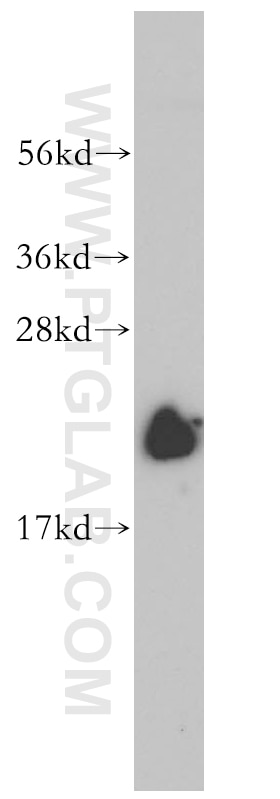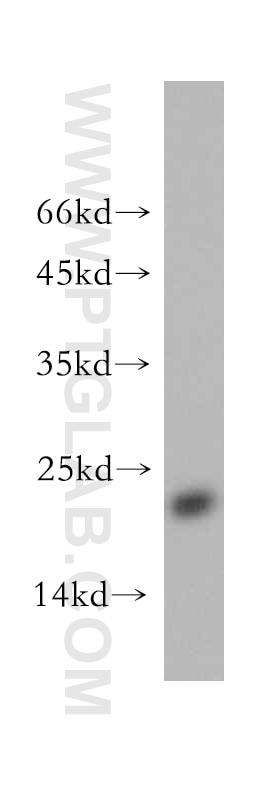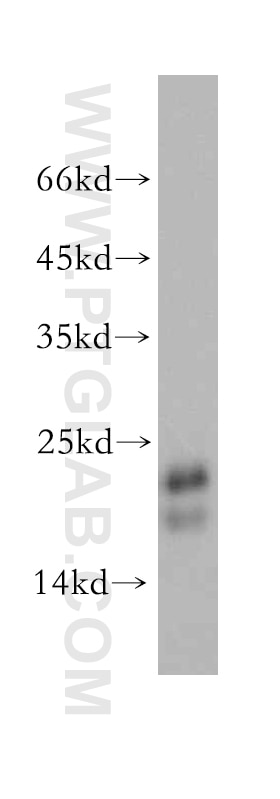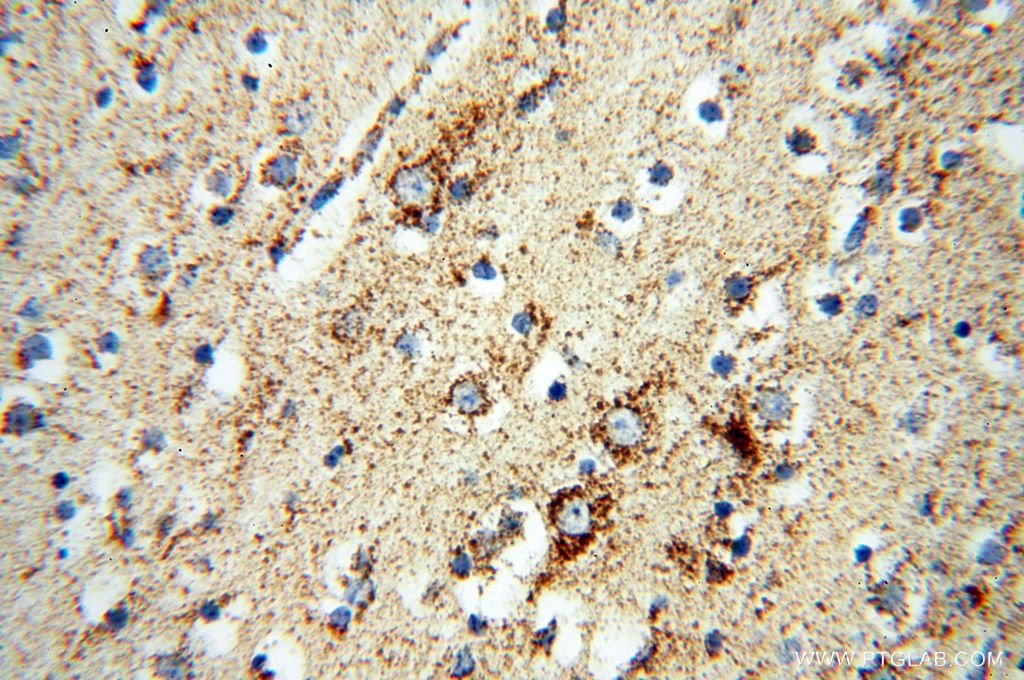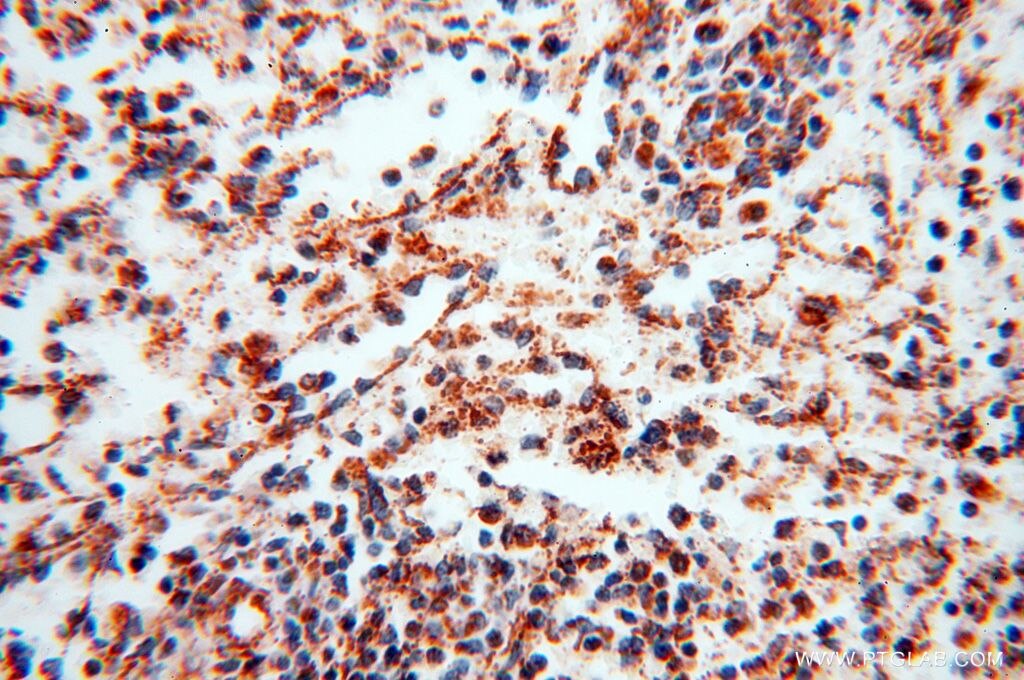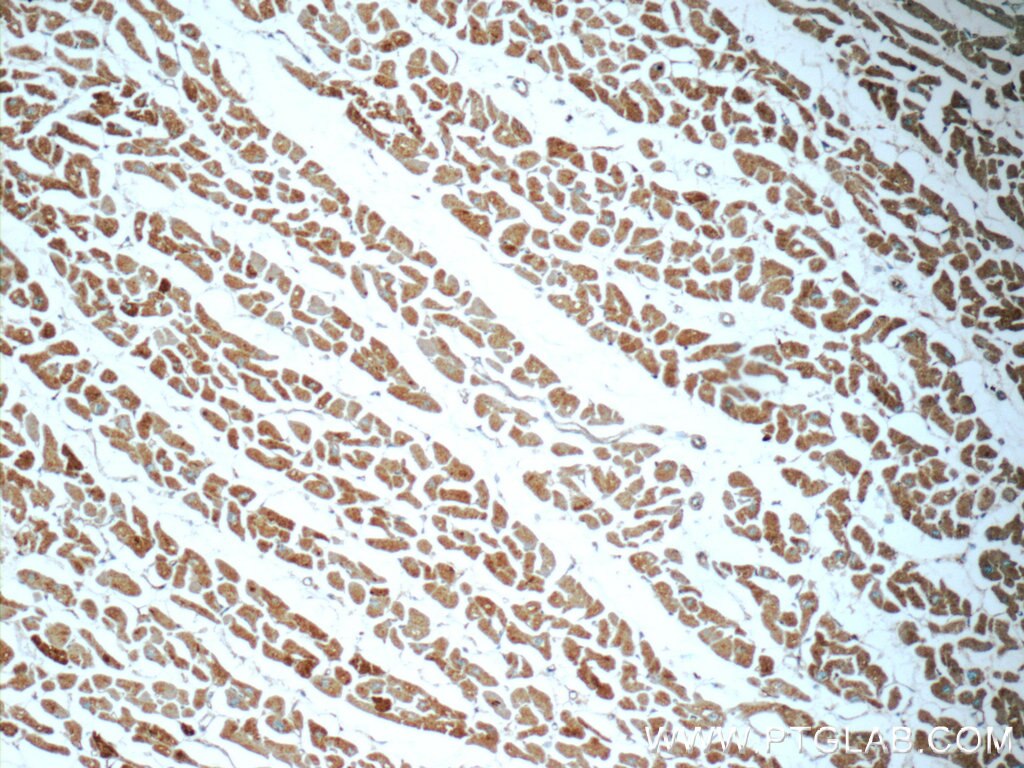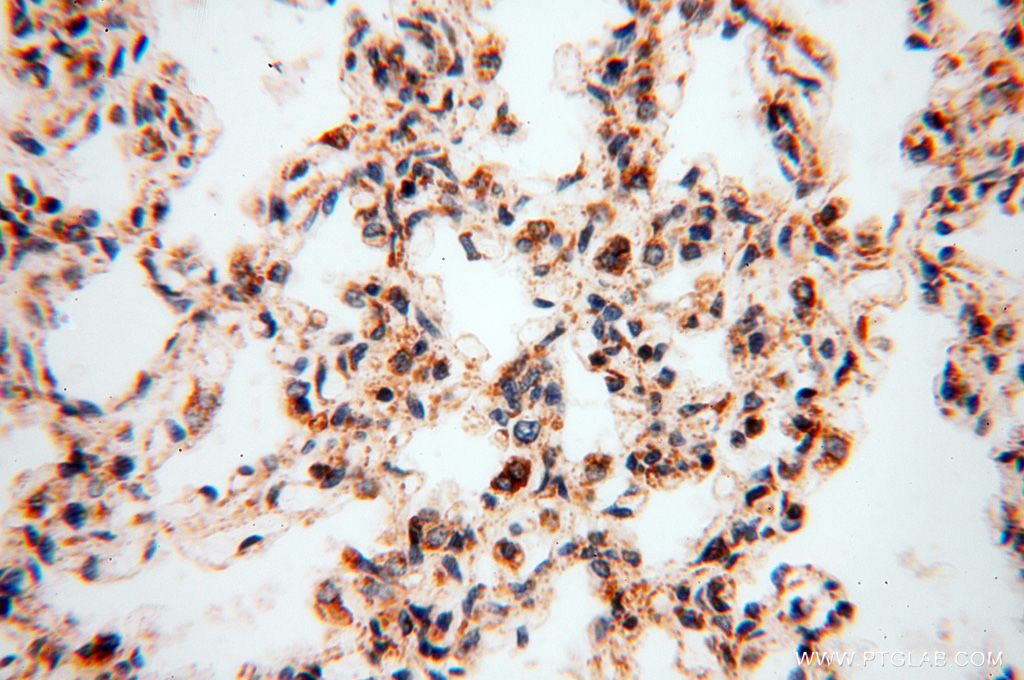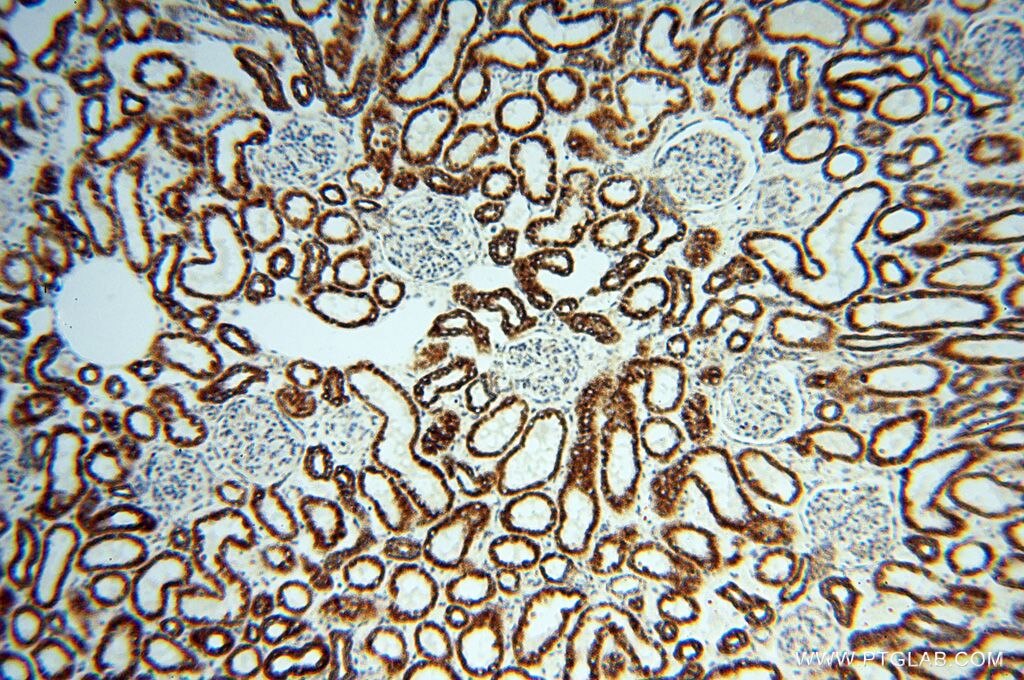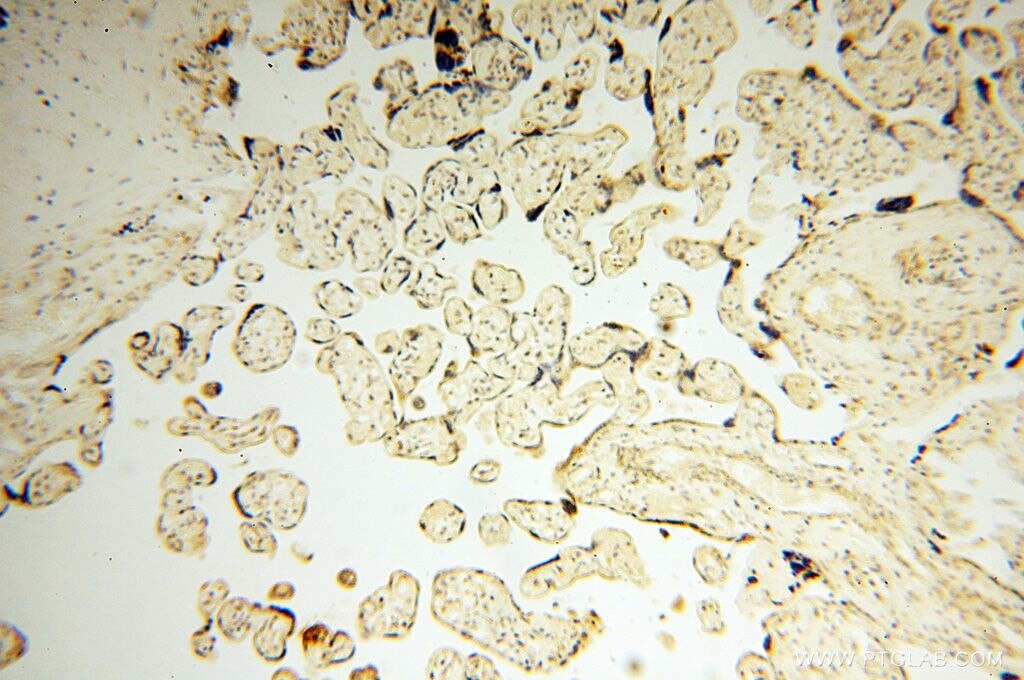Anticorps Polyclonal de lapin anti-NDUFB7
NDUFB7 Polyclonal Antibody for WB, IP, IHC, ELISA
Hôte / Isotype
Lapin / IgG
Réactivité testée
Humain, rat, souris
Applications
WB, IP, IHC, ELISA
Conjugaison
Non conjugué
N° de cat : 14912-1-AP
Synonymes
Galerie de données de validation
Applications testées
| Résultats positifs en WB | tissu ovarien de souris, cellules MCF-7, tissu cérébral de souris |
| Résultats positifs en IP | tissu cérébral de souris |
| Résultats positifs en IHC | tissu cérébral humain, tissu cardiaque humain, tissu de cancer du col de l'utérus humain, tissu hépatique humain, tissu placentaire humain, tissu pulmonaire humain, tissu rénal humain, tissu splénique humain, tissu testiculaire humain il est suggéré de démasquer l'antigène avec un tampon de TE buffer pH 9.0; (*) À défaut, 'le démasquage de l'antigène peut être 'effectué avec un tampon citrate pH 6,0. |
Dilution recommandée
| Application | Dilution |
|---|---|
| Western Blot (WB) | WB : 1:500-1:1000 |
| Immunoprécipitation (IP) | IP : 0.5-4.0 ug for 1.0-3.0 mg of total protein lysate |
| Immunohistochimie (IHC) | IHC : 1:20-1:200 |
| It is recommended that this reagent should be titrated in each testing system to obtain optimal results. | |
| Sample-dependent, check data in validation data gallery | |
Applications publiées
| WB | See 9 publications below |
Informations sur le produit
14912-1-AP cible NDUFB7 dans les applications de WB, IP, IHC, ELISA et montre une réactivité avec des échantillons Humain, rat, souris
| Réactivité | Humain, rat, souris |
| Réactivité citée | Humain, souris |
| Hôte / Isotype | Lapin / IgG |
| Clonalité | Polyclonal |
| Type | Anticorps |
| Immunogène | NDUFB7 Protéine recombinante Ag6709 |
| Nom complet | NADH dehydrogenase (ubiquinone) 1 beta subcomplex, 7, 18kDa |
| Masse moléculaire calculée | 16 kDa |
| Poids moléculaire observé | 18-22 kDa |
| Numéro d’acquisition GenBank | BC002595 |
| Symbole du gène | NDUFB7 |
| Identification du gène (NCBI) | 4713 |
| Conjugaison | Non conjugué |
| Forme | Liquide |
| Méthode de purification | Purification par affinité contre l'antigène |
| Tampon de stockage | PBS avec azoture de sodium à 0,02 % et glycérol à 50 % pH 7,3 |
| Conditions de stockage | Stocker à -20°C. Stable pendant un an après l'expédition. L'aliquotage n'est pas nécessaire pour le stockage à -20oC Les 20ul contiennent 0,1% de BSA. |
Informations générales
NDUFB7(NADH dehydrogenase [ubiquinone] 1 beta subcomplex subunit 7) is also named as CI-B18 and belongs to the complex I NDUFB7 subunit family. It is an accessory subunit of the mitochondrial membrane respiratory chain NADH dehydrogenase (Complex I), which couples the oxidation of NADH to the reduction of ubiquinone and the translocation of protons across the inner membrane. NDUFB7 protein lacks a mitochondrial targeting signal and transmembrane domains. However, it has a Cx(9)C motif that includes an intermembrane space targeting signal.(PMID:21310150).
Protocole
| Product Specific Protocols | |
|---|---|
| WB protocol for NDUFB7 antibody 14912-1-AP | Download protocol |
| IHC protocol for NDUFB7 antibody 14912-1-AP | Download protocol |
| IP protocol for NDUFB7 antibody 14912-1-AP | Download protocol |
| Standard Protocols | |
|---|---|
| Click here to view our Standard Protocols |
Publications
| Species | Application | Title |
|---|---|---|
Ecotoxicol Environ Saf Proteomic analysis reveals that cigarette smoke exposure diminishes ovarian reserve in mice by disrupting the CREB1-mediated ovarian granulosa cell proliferation-apoptosis balance | ||
iScience Mutational burden of XPNPEP3 leads to defects in mitochondrial complex I and cilia in NPHPL1 | ||
J Biol Chem A Point Mutation in the Exon Junction Complex Factor Y14 Disrupts Its Function in mRNA Cap Binding and Translation Enhancement. | ||
Mol Med Altered redox mitochondrial biology in the neurodegenerative disorder fragile X-tremor/ataxia syndrome: use of antioxidants in precision medicine. |

